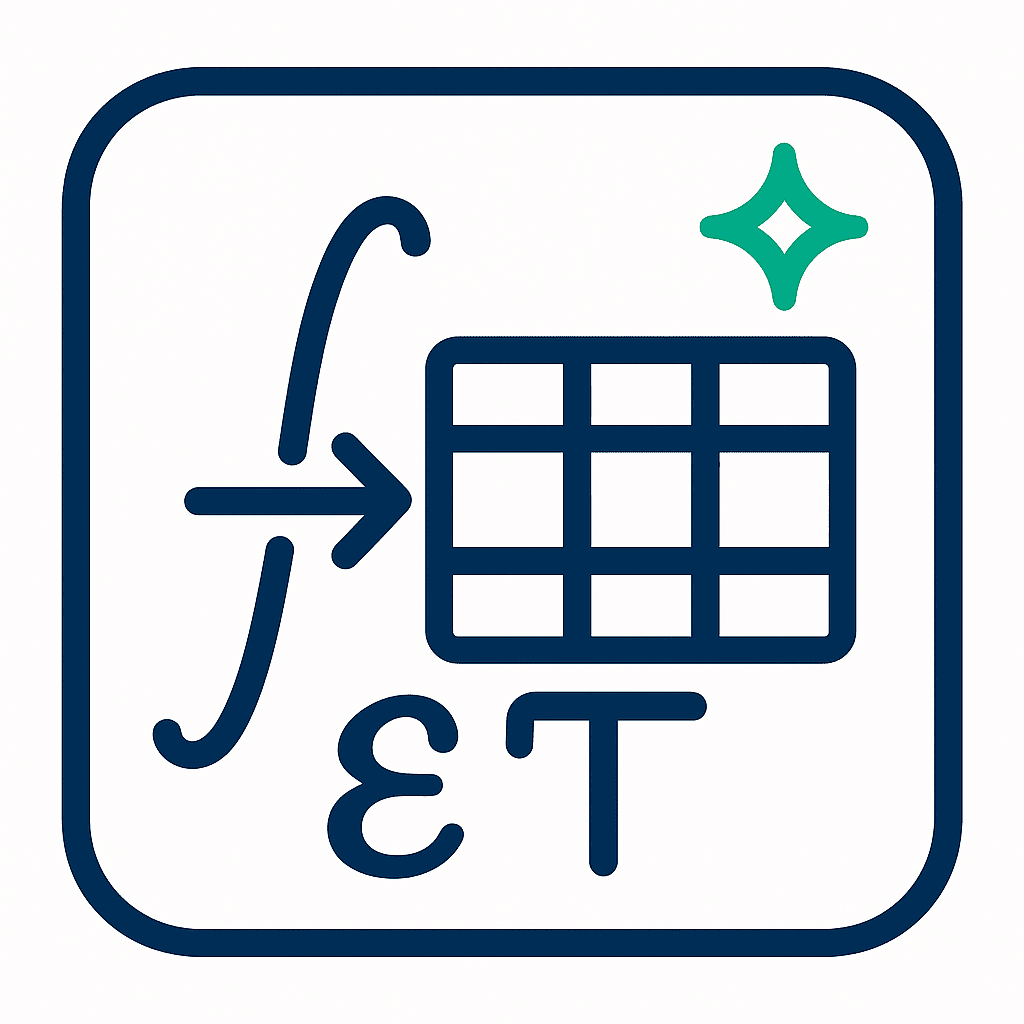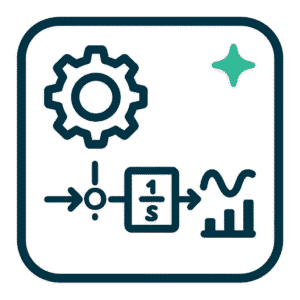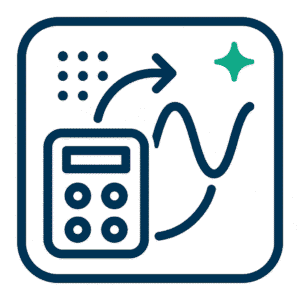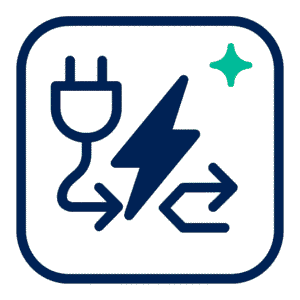Quick reference: compact Laplace transform table
The following entries are the most used in engineering practice. The time-domain functions are understood to be causal (multiplication by the unit step u(t)) unless otherwise noted.
| Time domain f(t) | Laplace F(s) = 𝓛{f(t)} | Region / remark |
|---|---|---|
| 1 | 1 / s | Re(s) > 0 (unit step). See Paul’s Online Math Notes. |
| tn (integer n ≥ 0) | n! / sn+1 | Factorial scaling. |
| eat | 1 / (s – a) | Re(s) > Re(a). |
| sin(at) | a / (s2 + a2) | To compute 𝓛{sin t} set a = 1. |
| cos(at) | s / (s2 + a2) | |
| δ(t − τ) | e−τ s | Impulse / time delay. |
| u(t − τ) f(t − τ) | e−τ s F(s) | Time-shift (delay) property. |
| Convolution f * g | F(s) G(s) | Convolution → multiplication. |
For broader tables and additional special cases consult standard references such as Paul’s Online Math Notes or university lecture tables (for example Stanford lecture notes on Laplace transforms).

Key properties (operational summary)
These properties are the practical tools used repeatedly in applied problems.
- Linearity. 𝓛{a f(t) + b g(t)} = a F(s) + b G(s).
- Time shift (delay). If f(t) ↔ F(s), then f(t − τ) u(t − τ) ↔ e−τ s F(s).
- Frequency shifting / exponential multiplication. eat f(t) ↔ F(s − a).
- Differentiation in time. 𝓛{f′(t)} = s F(s) − f(0+). Higher derivatives follow similarly; this is the algebraic shortcut used to convert ODEs to algebraic equations.
- Integration in time. 𝓛{∫0t f(τ) dτ} = (1 / s) F(s).
- Convolution. 𝓛{f * g} = F(s) G(s).
- Initial and final value theorems. If conditions hold: f(0+) = lims→∞ s F(s) and f(∞) = lims→0 s F(s) (use with caution).
Solving differential equations: step-by-step recipe
A standard pattern converts an initial-value ODE into an algebraic equation in s, solves for Y(s), and then inverts the transform to obtain y(t).
Step 1 — Transform each term. Replace time derivatives by their s-domain equivalents (use initial conditions).
Step 2 — Algebraic solve. Rearrange to get Y(s) as a rational expression or a product of known transforms.
Step 3 — Invert. Use partial fractions and a Laplace transform table lookup to obtain y(t). If necessary, use the Bromwich integral (inverse contour integral) or numeric inversion.
Worked example (standard): solve y′(t) + y(t) = δ(t) with y(0) = 0.
- Apply transform: s Y(s) − y(0) + Y(s) = 𝓛{δ(t)} = 1. With y(0) = 0 this gives (s + 1) Y(s) = 1.
- Solve algebraically: Y(s) = 1 / (s + 1).
- Invert with table: y(t) = e−t u(t). (See MIT or university lecture notes for similar worked examples.)
Inversion techniques and the Bromwich integral
The canonical inverse transform has an integral form. The inverse transform is commonly written as the Bromwich integral (also called the Mellin inverse formula):
f(t) = 𝓛−1{F(s)} = (1 / 2π i) ∫γ−i∞γ+i∞ est F(s) ds. See the Wikipedia entry on the Inverse Laplace Transform.
In practice the Bromwich integral is used conceptually; inversion is usually accomplished by partial fractions and table lookup, residue calculus when poles are known, or by numeric inversion algorithms for complicated transforms.
Practical tooling and workflows
A measured workflow mixes symbolic table lookups with numeric solvers:
- Table lookup and manual inversion. Use Paul’s Online Math Notes or standard university tables for quick transforms and partial-fraction templates. Paul’s Online Math Notes.
- Symbolic engines (step-by-step). Tools such as SymPy, Mathematica and other CAS provide laplace transform step-by-step and inverse laplace transform solver functionality; they are useful for checking algebra and for producing derivations.
- Web calculators. Searchable utilities (e.g., Wolfram|Alpha, Symbolab) act as a laplace transform calculator online or laplace s-domain calculator and frequently include the inverse step. Use them for verification or when partial-fraction decomposition becomes tedious.
- Signal-processing toolchains. For systems analysis and block-diagram workflows, control-design toolboxes include signal processing laplace tool features that directly manipulate transfer functions and compute impulse/step responses.
Recommended starting links:
- Wikipedia — Laplace transform
- Paul’s Online Math Notes — Laplace Transforms
- MIT OpenCourseWare — Differential Equations (lecture notes)
Short checklist for standard tasks
- To compute Laplace of sin t: use table entry 𝓛{sin(at)} = a / (s2 + a2). For sin t set a = 1.
- To get Laplace of unit step function: 𝓛{u(t)} = 1 / s. For delayed step, multiply by e−τ s.
- For Laplace transform for differential equations: replace derivatives with polynomials in s and solve algebraically, then invert.
- If a closed-form inverse is unknown, use an inverse laplace transform solver or numeric inversion routine.
Learning and practice resources
- Use an interactive laplace transform calculator online to validate hand computations.
- Practice with a laplace transform practice solver or online step-by-step solver to build fluency in partial fractions and time-domain identification.
- For signal-system work, use a laplace s-domain calculator built into control toolboxes to compute transfer functions and responses.
Final Considerations
The Laplace transform reduces linear, time-invariant analysis to algebra: it converts differential operators into polynomials in s, and convolution into multiplication. Practitioners should pair a concise Laplace transform table with algebraic facility (partial fractions, residues) and a small set of computational tools: a reliable laplace transform table lookup (Paul’s notes or university tables), a laplace transform calculator online for quick checks, and an inverse laplace transform solver for tough inversions. For engineering workflows the most recurring tasks—compute Laplace of sin t, use Laplace of unit step function for switched inputs, apply Laplace transform for differential equations—are routine once the core properties (linearity, time-shift, differentiation in time, convolution) are memorised and practised. The classical integral inversion (Bromwich integral) guarantees uniqueness and provides the theoretical foundation, but table lookup plus partial fraction inversion remains the practical path for most applied problems.






